In this article, you will learn about 5 best Python IDEs and code editors for Python newbies and also for professional users.
Python was released in 1991 by Guido van Rossum. It is the most popular programming language according to PYPL (Popularity of Programming Language). Python has approx 31% share in popularity which is more than java which is 18% in the world.
Python supports structured, object-oriented, and functional programming. Mainly used for automating repetitive tasks.
Python interpreters are available for all the three mainly used operating systems – Linux, Windows, and macOS. Programmers prefer to use Python language because of its amazing features and versatility.
You can speed up your development work using IDEs (Integrated Development Environment) instead of a normal text editor. Many features are provided for the development in IDEs which are not available in the text editor.
Table of Contents
How to choose which Python IDE /code editor is best for you?
Well, you can also write small Python programs on any text editor with Linux terminal but for the big projects and professional work you need to use an IDE/code editor.
Choosing an IDE/code editor mainly depends on its availability and features. Where some Python IDEs are available free, some are also having pricing and freemium versions. In this article, we also discuss there availability and pricing.
I personally prefer and recommended open-source software that’s why in this roundup most of the IDEs are Opensource and available free.
After seeing all the features and other things, it totally depends on your choice to choose one of them. Because making this type of roundup not easy. However, I will try to discuss every aspect that is necessary.
In this article, we will discuss the features, pricing, advantages, and disadvantages of all these IDEs. Also, I will write down the platform supported by these IDEs.
Here is the list of some best Python IDEs along with there pricing and download links.
Best Python IDEs and Code Editors
One more thing to remember, the order of IDEs in this list is made according to my personal choice. I mentioned all the features for you to choose one of them. Your choice may be different from mine.
1- PyCharm
PyCharm is a cross-platform integrated development environment developed by JetBrains.

- Platform: Linux, macOS, Windows
- Pricing: Freemium
- Official Website: https://www.jetbrains.com/pycharm/
- Type: IDE
- Download Link: https://www.jetbrains.com/pycharm/download/
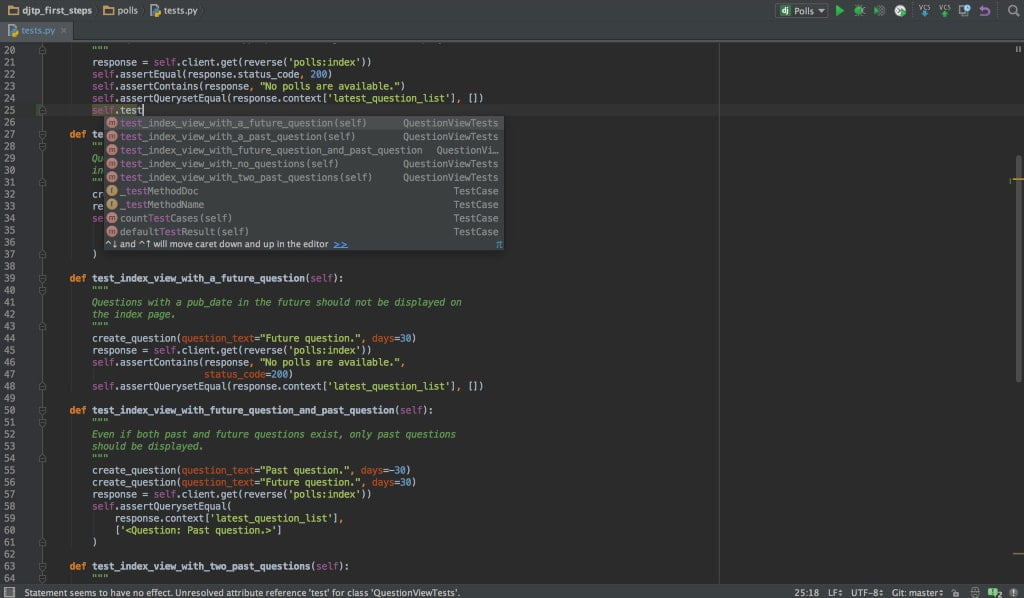
PyCharm IDE is solely developed for professional developers. Features like Intelligent Coding Assistance make programming easy and fast by auto code completion and code inspection. However, Error highlighting and quick-fixes like features makes debugging easy.
There are mainly two versions available of PyCharm:
- Community Edition: Free and Open-source version which is also lightweight in comparison with the Professional version.
- Professional Edition: Full-featured premium version with HTML, JS, and SQL support.
Advantages
- Built-in Connectivity to various Databases like MySQL, Oracle, PostgreSQL, and many others.
- Live Code verification with Error highlighting and quick fixes.
- Huge and Active community support
Disadvantages
- Negative impact on resources. It needs a lot of memory.
- Require extra efforts to work with
Want to learn more about Jetbrains PyCharm? Learn Here.
2 – Visual Studio Code
VS Code or Virtual Studio Code is one of my favorite IDE. It’s Free, It builds on Opensource and It Runs Everywhere just like the tag line says.

- Platform: Linux, macOS, Windows
- Pricing: Free/Opensource
- Official Website: https://code.visualstudio.com/
- Type: IDE
- Download Link: https://code.visualstudio.com/download
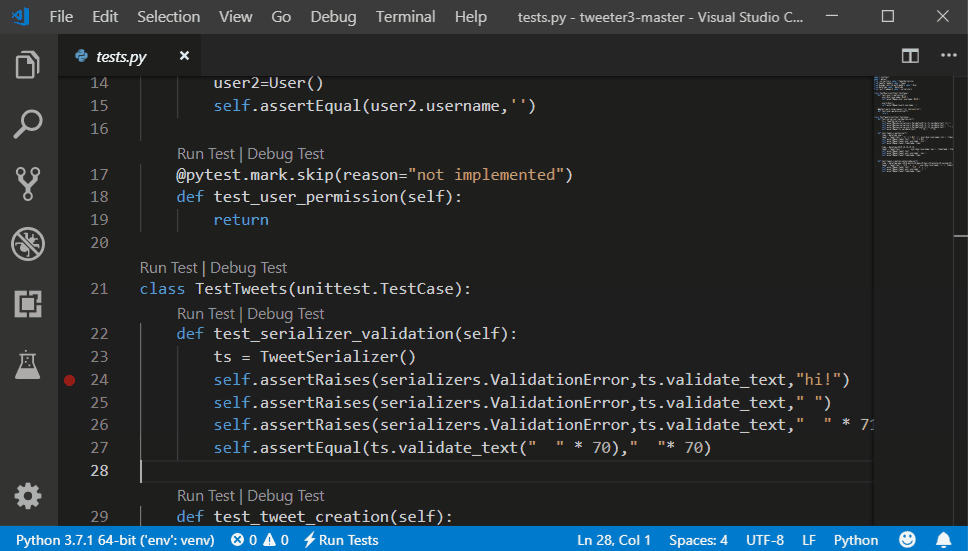
VS Code is created by Microsoft with Opensource License. With thousands of plugins, the VS Code is used widely for development in many programming languages. VS Code having the highest number of contributors on GitHub. However, Due to its extension based architecture, you have to add a plugin for enabling Python support. VS Code launched in 2015, and it becomes popular between developers.
VS Code built on Electron, an open-source framework developed and maintained by GitHub. Electron is used for Build cross-platform desktop apps with JavaScript, HTML, and CSS.
Advantages
- Thousands of extensions available.
- Features like code completion, code linting, debugging, and unit testing.
- A powerful code auto-completion engine (IntelliSense).
- Debugging console and builtin terminal to launch server commands.
- Lightweight because of extension based architecture.
- Active and huge community support.
Disadvantages
- Not suitable for larger coding projects.
- Thousands of extensions and harder to find which one best suits your needs.
Want to learn more about the VS Code Click Here.
3 – Spyder
Spyder stands for Scientific Python Development Environment. An opensource IDE that has written in Python and for Python.
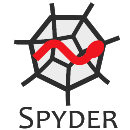
- Platform: Linux, macOS, Windows
- Pricing: Free/Opensource
- Official Website: https://www.spyder-ide.org/
- Type: IDE
- How to Install: https://docs.spyder-ide.org/installation.html
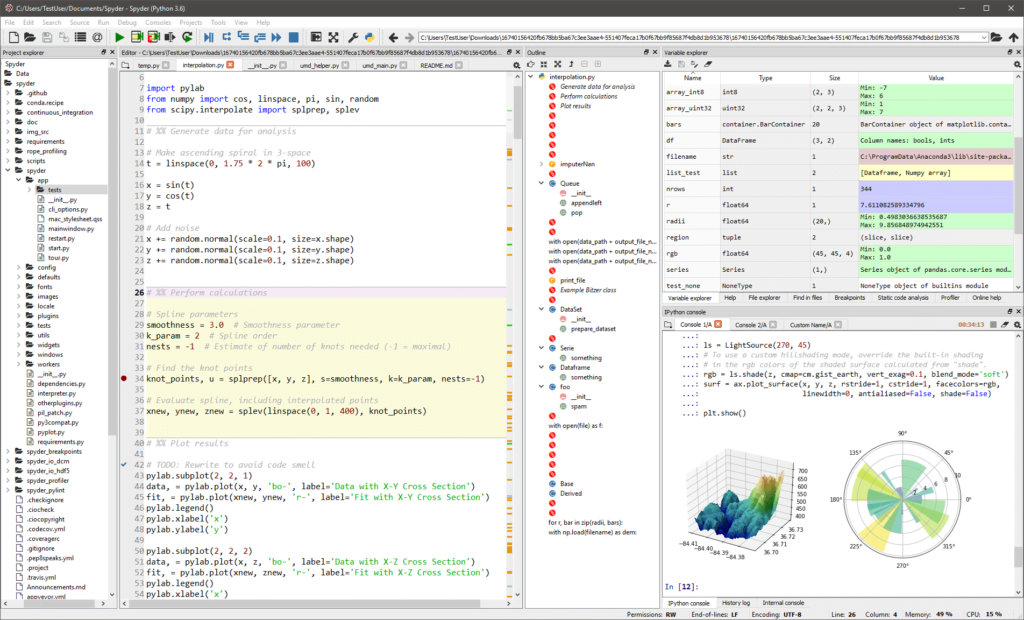
Spyder was developed by Pierre Raybaut in 2008 with the name Pydee in the first version. Spyder designed mainly for scientific work and released under MIT License. It can be easily installed using Anaconda, a powerful opensource package management system for Python and R programming language applications.
Spyder can integrate with many scientific Python applications like Matplotlib, SciPy, NumPy, Pandas, Cython, IPython, SymPy, and many others. With features like autocompletion, debugging and iPython shell Spyder becomes a good choice for developing Python applications. However, it has fewer features if we compare it to the other IDEs like Pycharm or VS Code.
Advantages
- The advanced analysis provides histograms and time-series.
- Good community support and active development on Github.
- Nice documentation for installing and using it.
- Advanced debugging and in-depth inspection features.
- Advanced visualization capabilities.
- Automatic code completion.
- It can be run with less memory.
Disadvantages
- Less configurable
- Dependencies problems
Learn more about Spyder Python IDE.
4 – Atom
Atom is an open-source code editor developed by Github with a builtin package manager. Various packages are available as per different needs in software development.
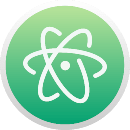
- Platform: Linux, macOS, Windows
- Pricing: Free/Opensource
- Official Website: https://atom.io/
- Type: IDE
- How to Install: https://flight-manual.atom.io/getting-started/sections/installing-atom/
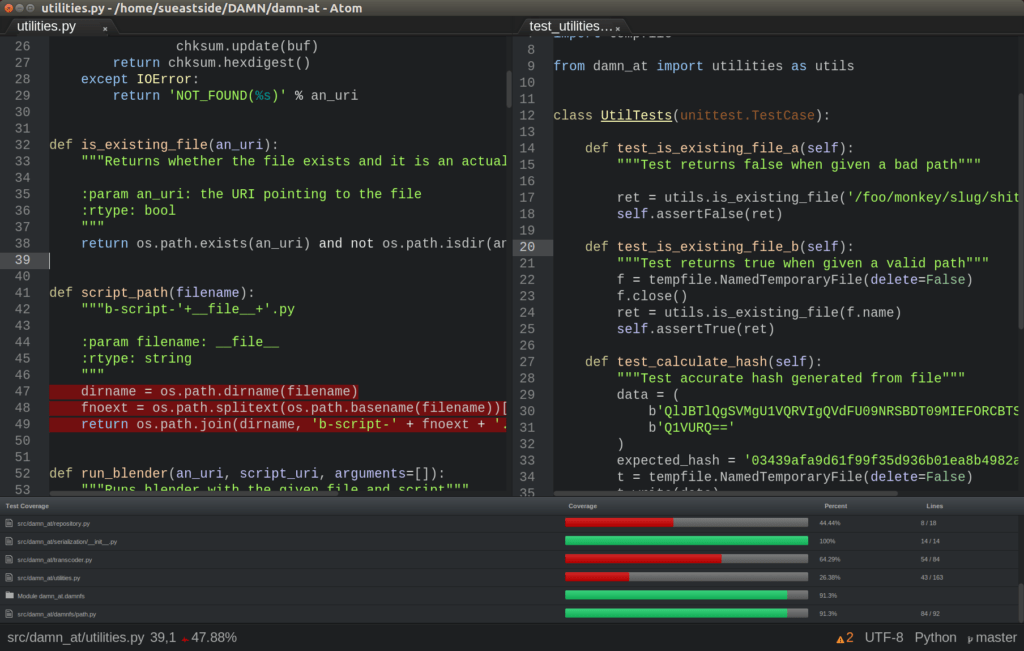
Atom is one of the preferred IDE due to its simple and customizable interface. It has its own package manager from which you can install packages as per need. For Python development, you can use the packages like autocomplete-python, python-debugger, etc. Some features are similar to Sublime text editor however, better interface and performance are making Atom more preferable.
Basic features like other IDEs are Obviously available in Atom. Features like code auto-completion, code linting, syntax highlighting, and Error debugging are can be achieved by installing different packages for different programming languages.
Advantages
- Nicely documented usage
- Builtin package Manager for Plugins
- Customizable interface
- Cross-platform Application development
- Features like Error highlighting, code completion, debugging
Disadvantages
- High RAM usage
- Having issue while handling large code files
5 – Sublime Text 3
Sublime Text is a well-known text editor for many languages. It’s popular because of active community support and lightweight interface.

- Platform: Linux, macOS, Windows
- Pricing: Free/Opensource
- Official Website: http://www.sublimetext.com/
- Type: IDE
- Download Link: http://www.sublimetext.com/3
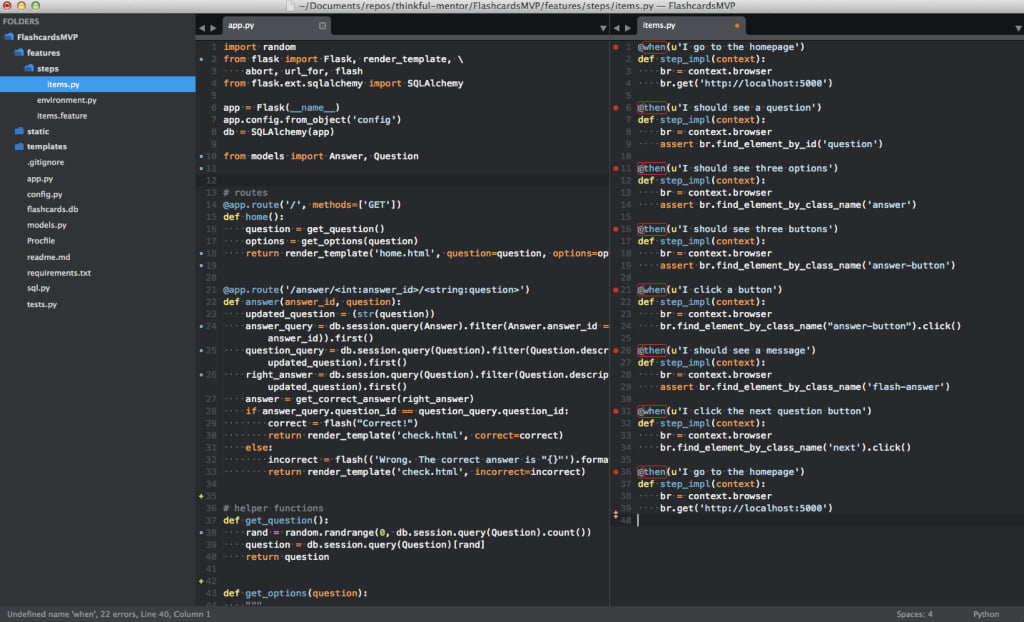
Sublime Text is created and first released by Jon Skinner in 2007. It’s a text editor with support for almost all main programming languages including Python. Sublime written in C++ and Python. With the built-in support for python, it also has plugins and packages to customize like a fully-featured Python development IDE. Cross-platform support for all three major operating Windows, Linux, and macOS.
Advantages
- Features like Code completion, Error highlighting and Code linting can be achieved using plug-ins
- Great community support
- Different file editing modes like multi-screen or side-by-side
- Lightweight and Fast
- Able to handle large code files
- Supports almost all programming languages
Disadvantages
- Not an Opensource/Free application
- May required little learning to work with
Learn More about Sublime Text 3.
Summary
Choosing from the above top 5 Python IDEs is your personal choice according to your needs. But you should give try at least one time for each one.
Which IDE is your favorite? Please share your choices in the comment section. Also, suggest to me if you want me to add any other Python IDE in this article.
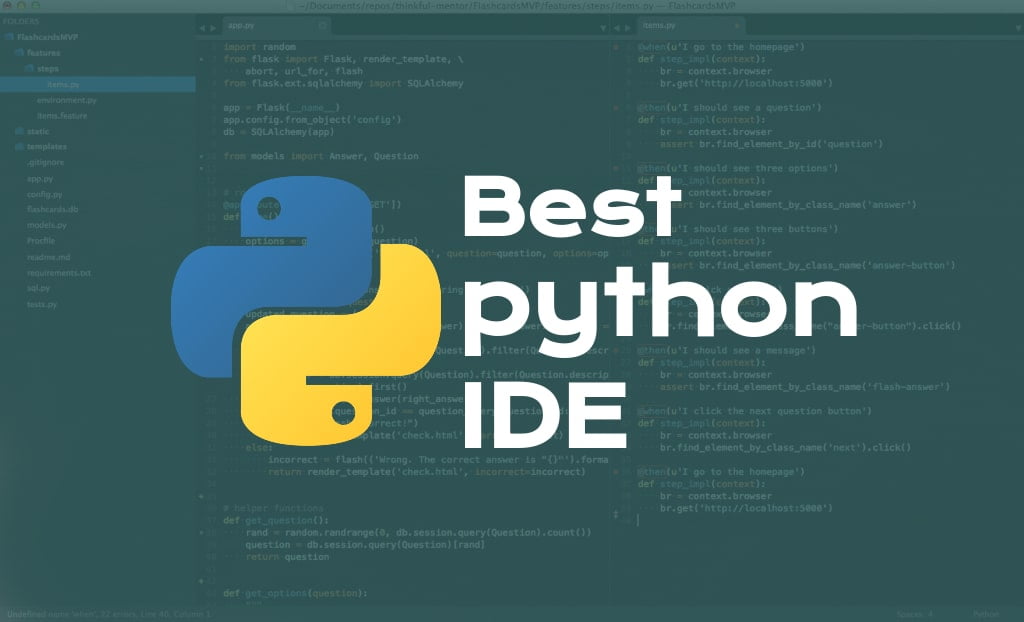
I prefer to use Codelobster Python IDE – http://www.codelobster.com/python.html